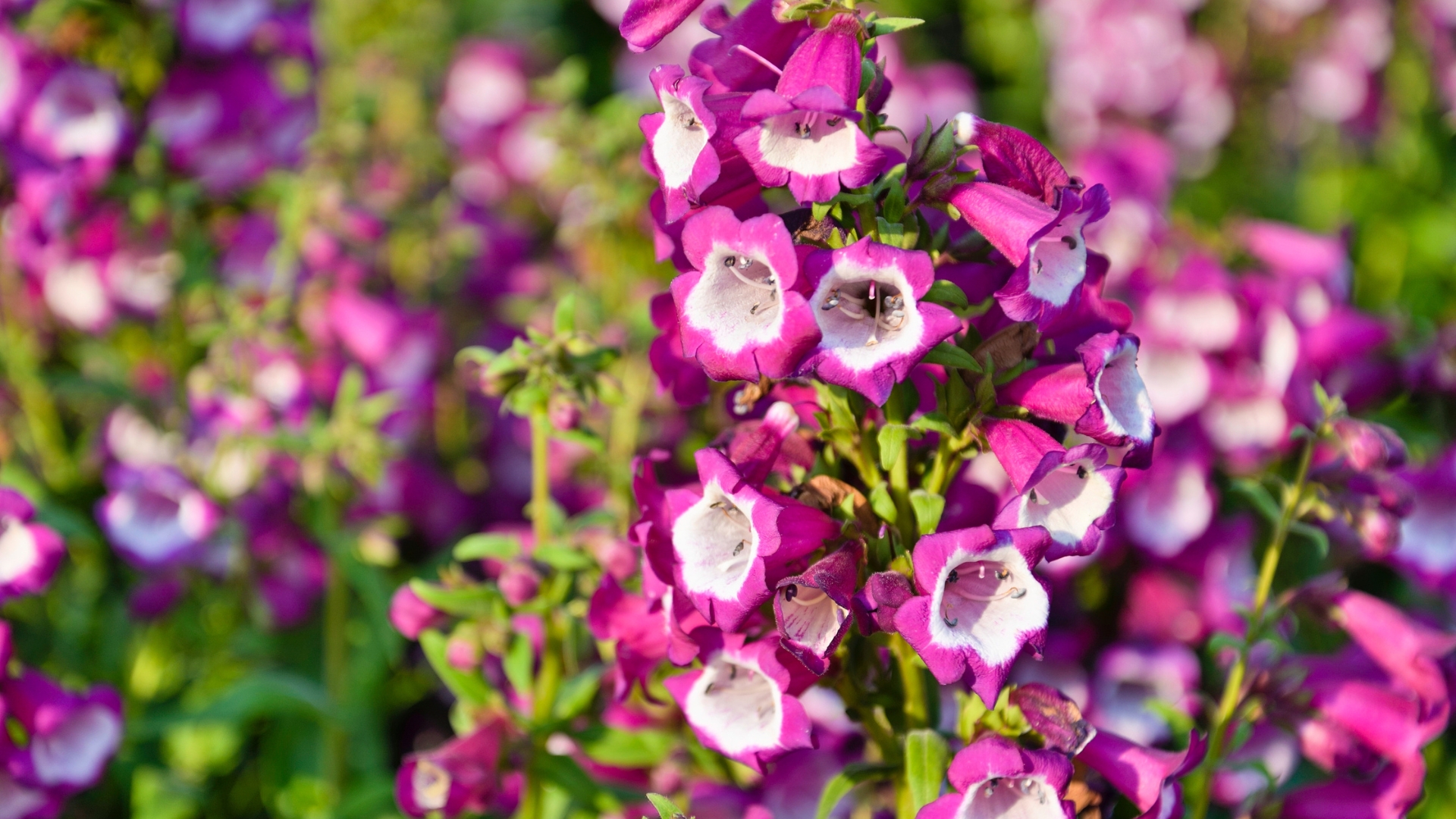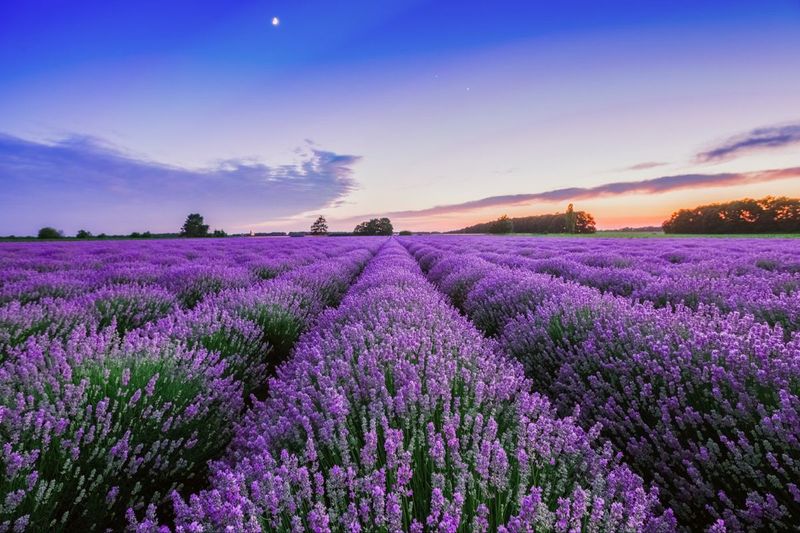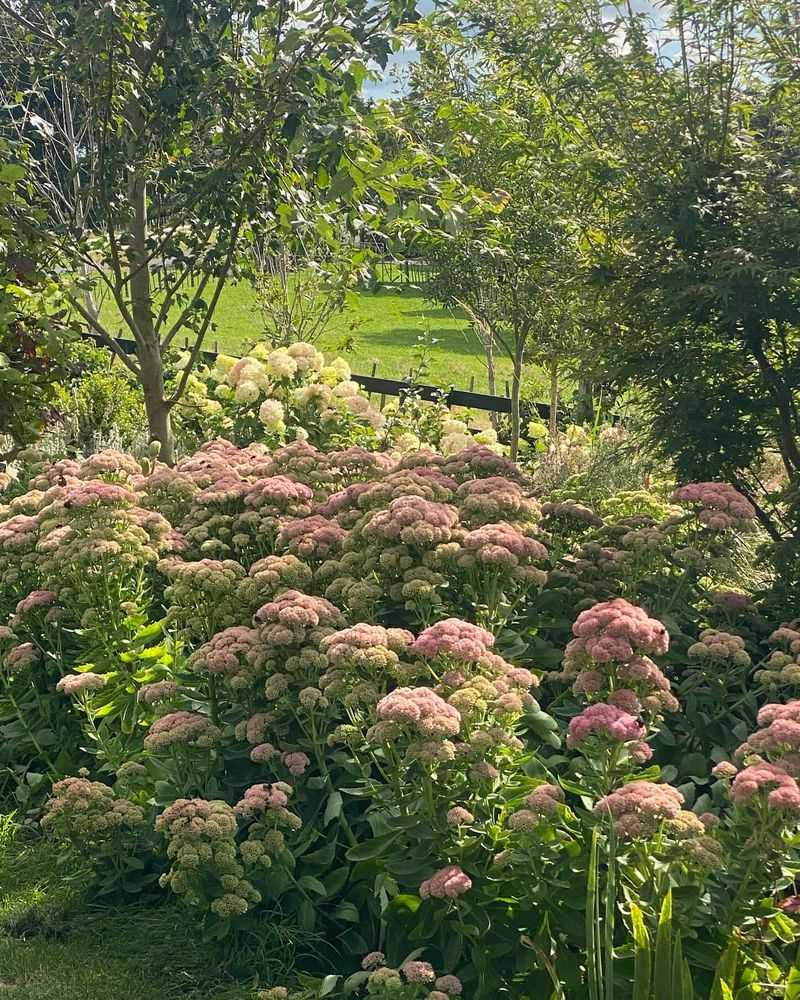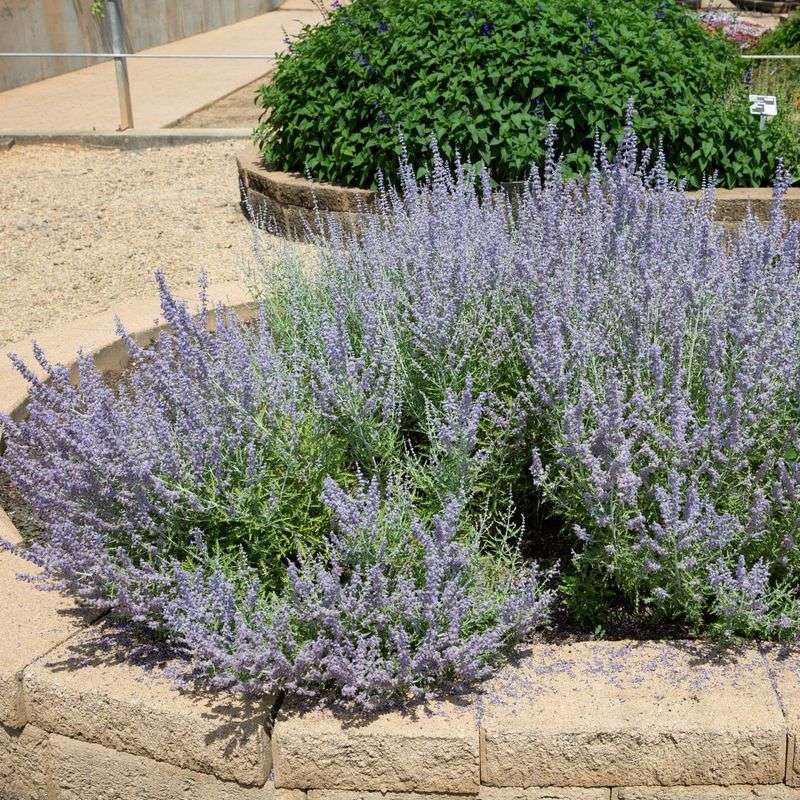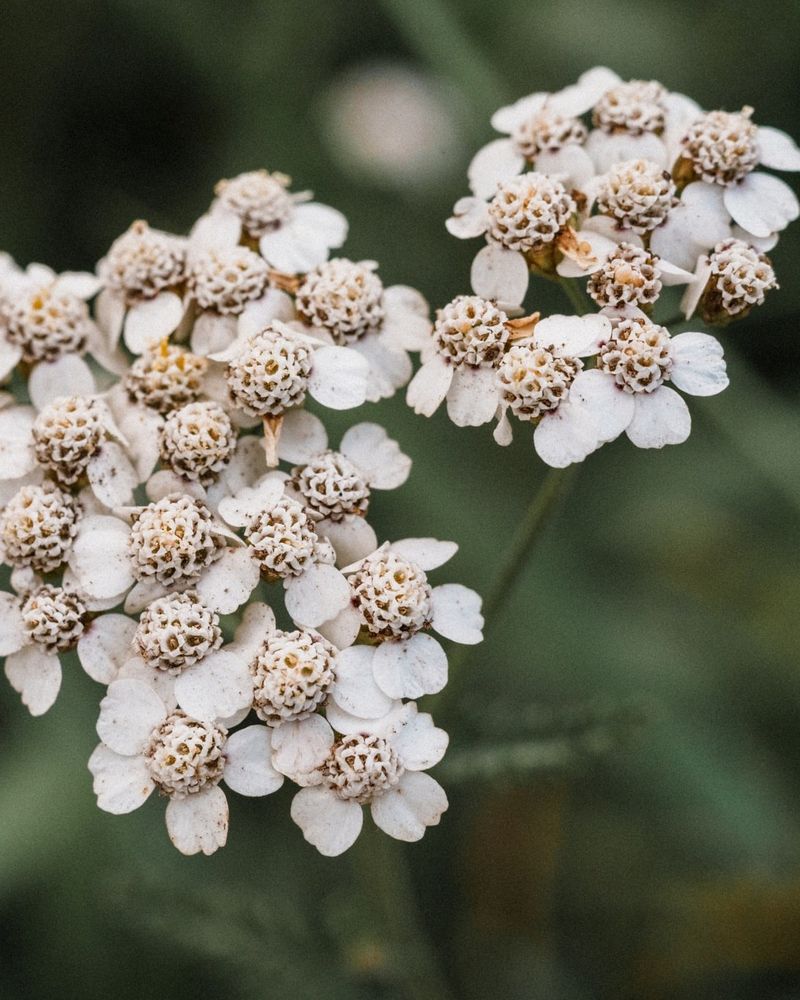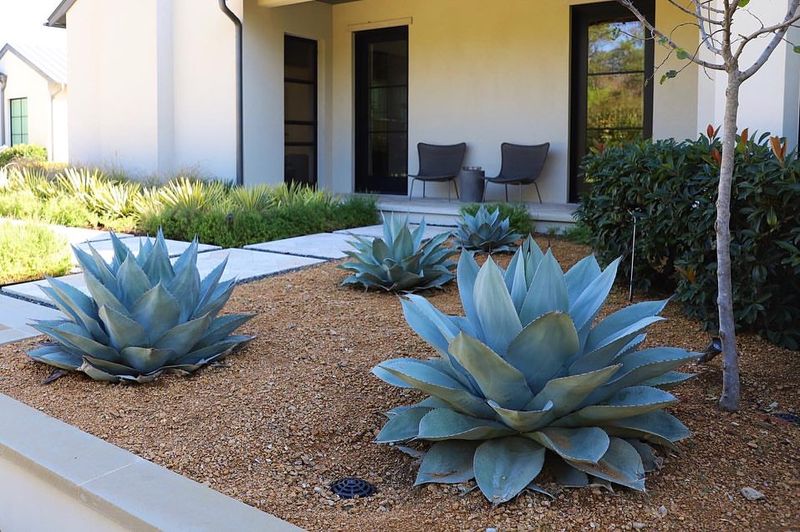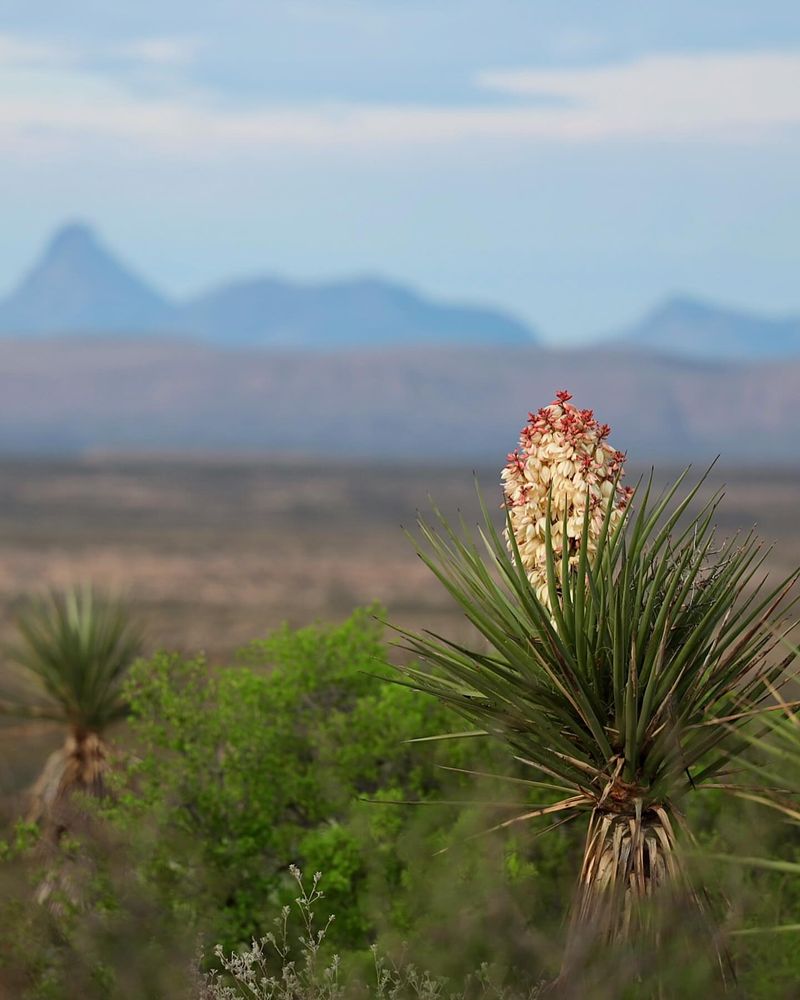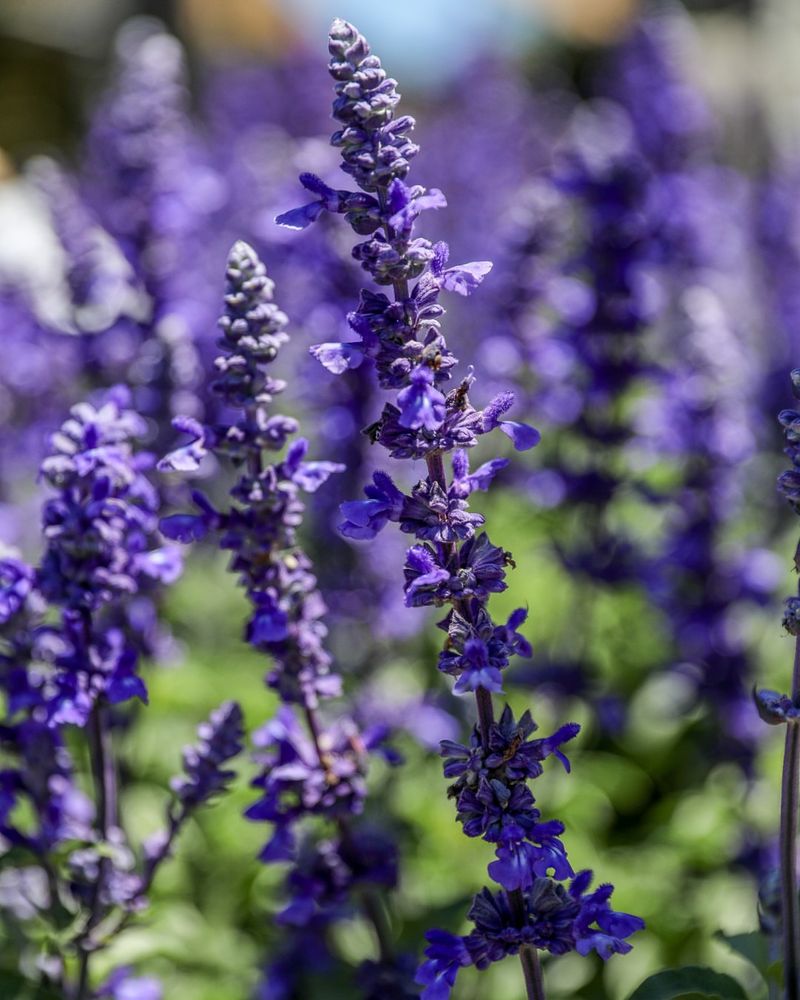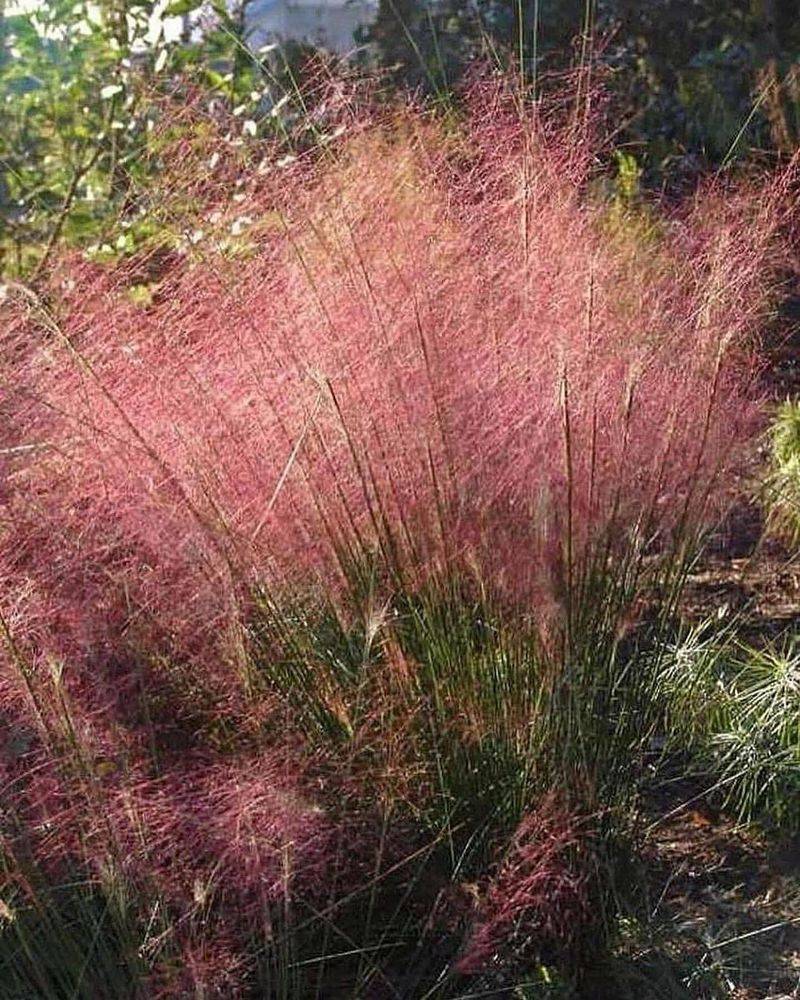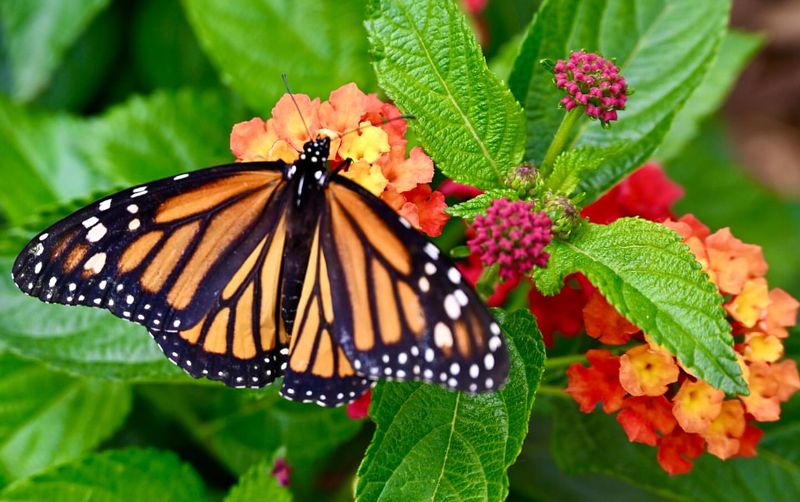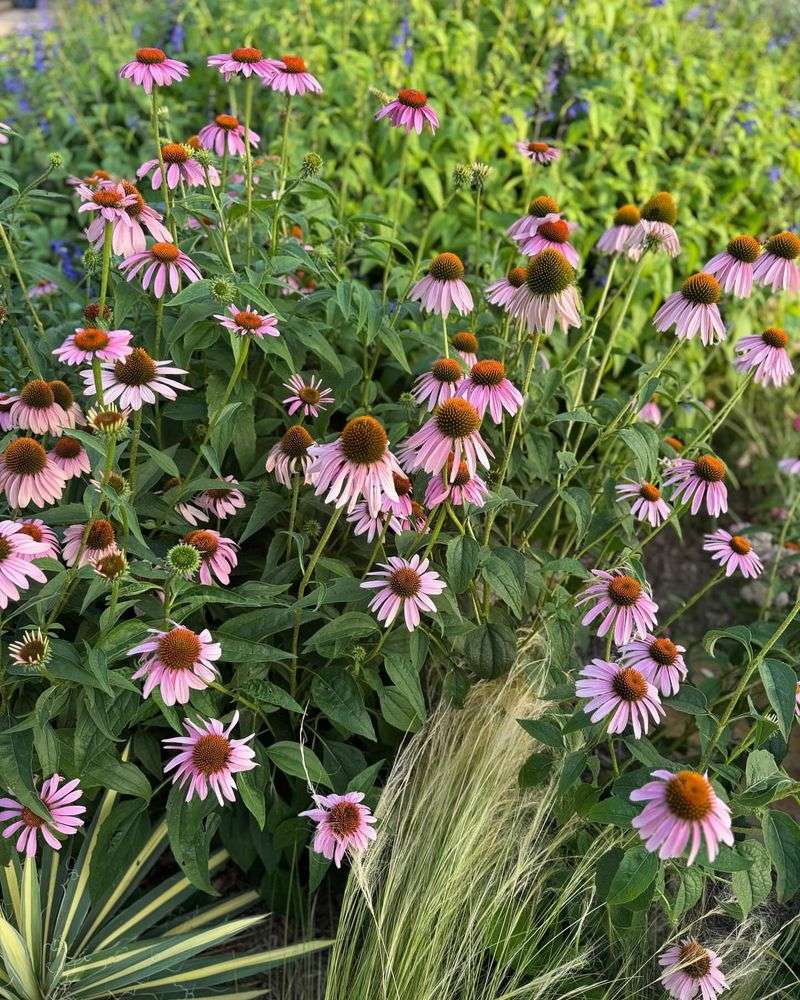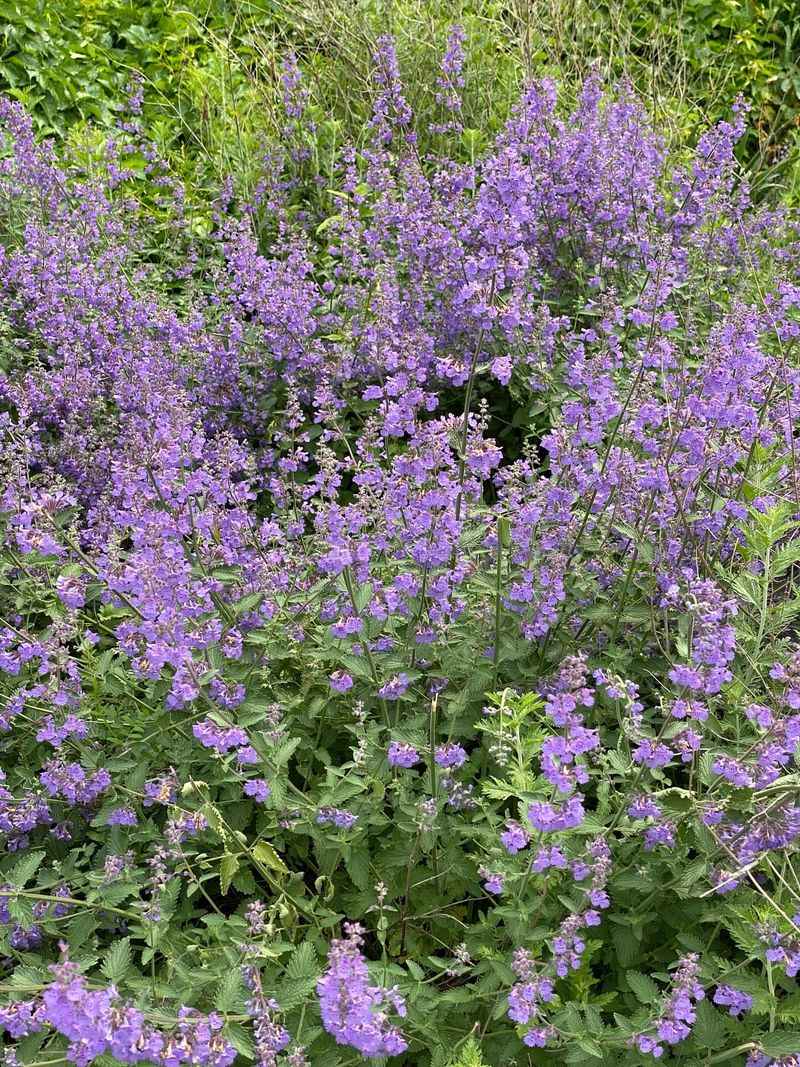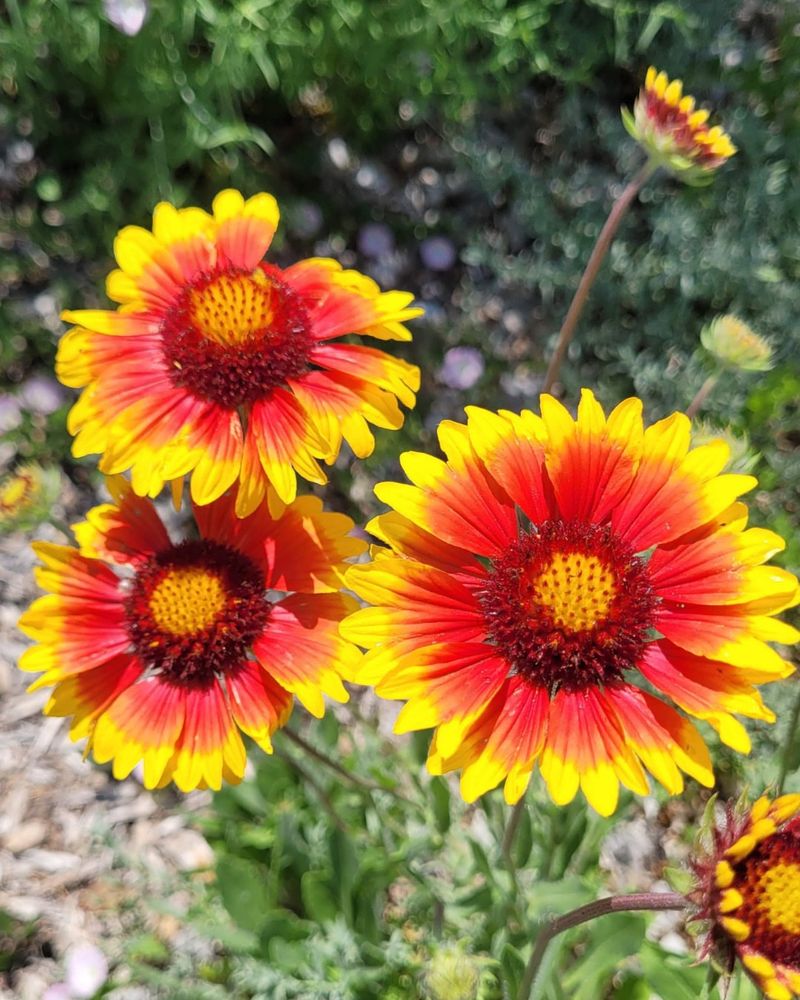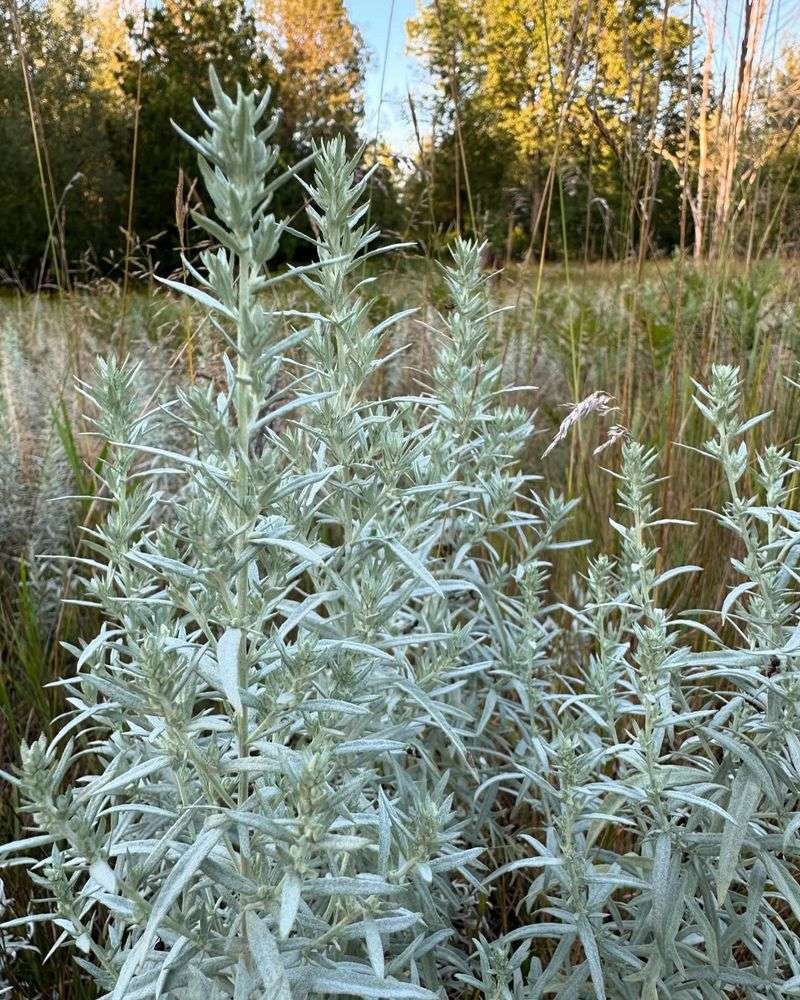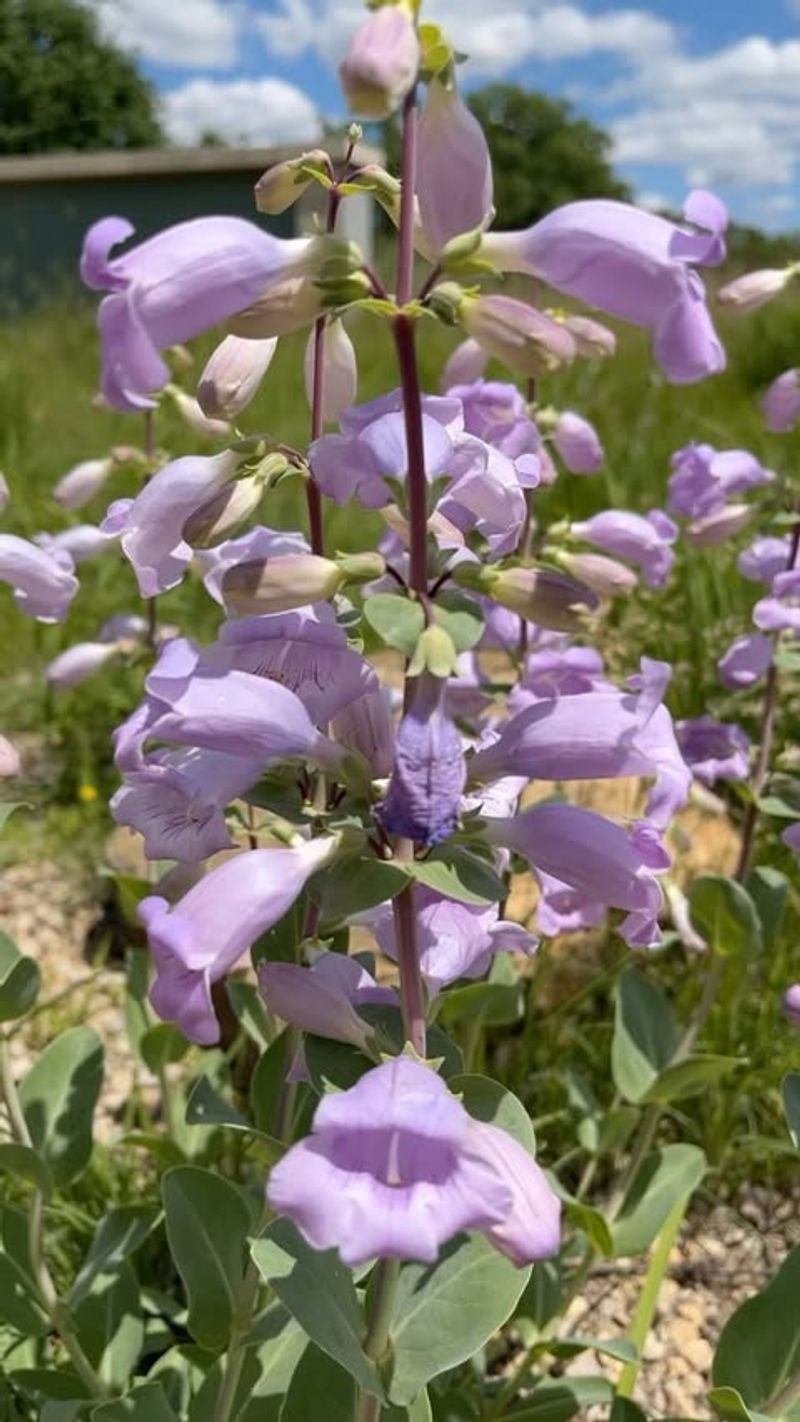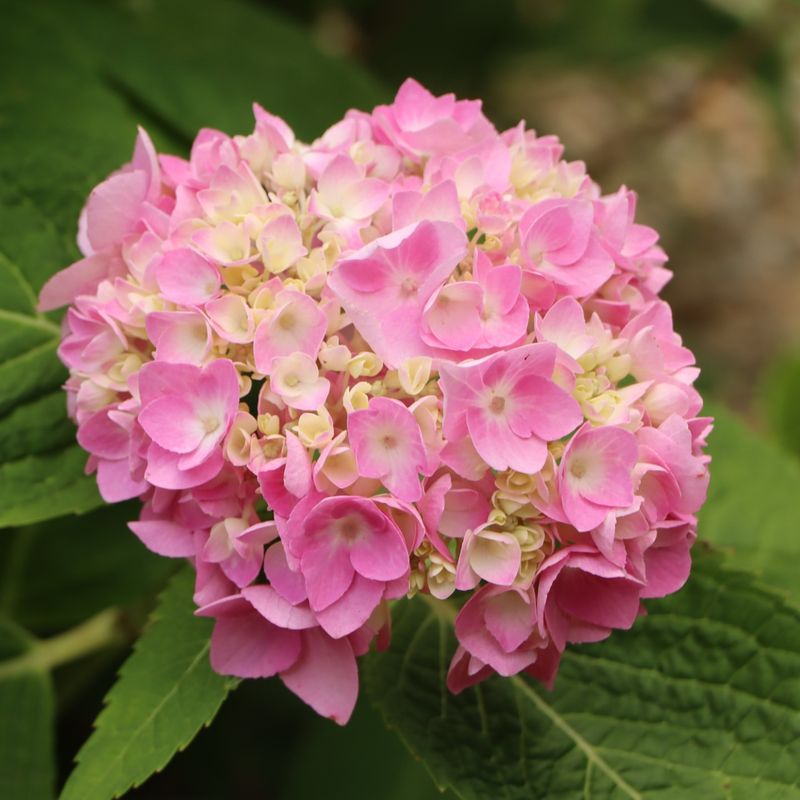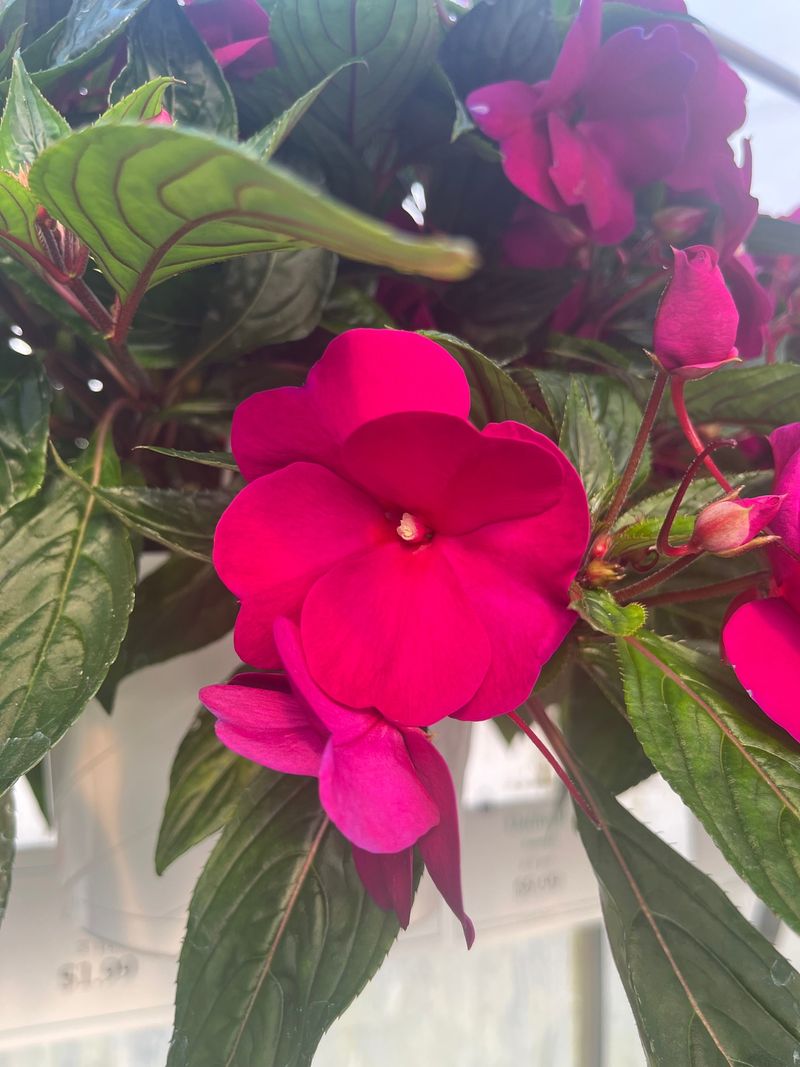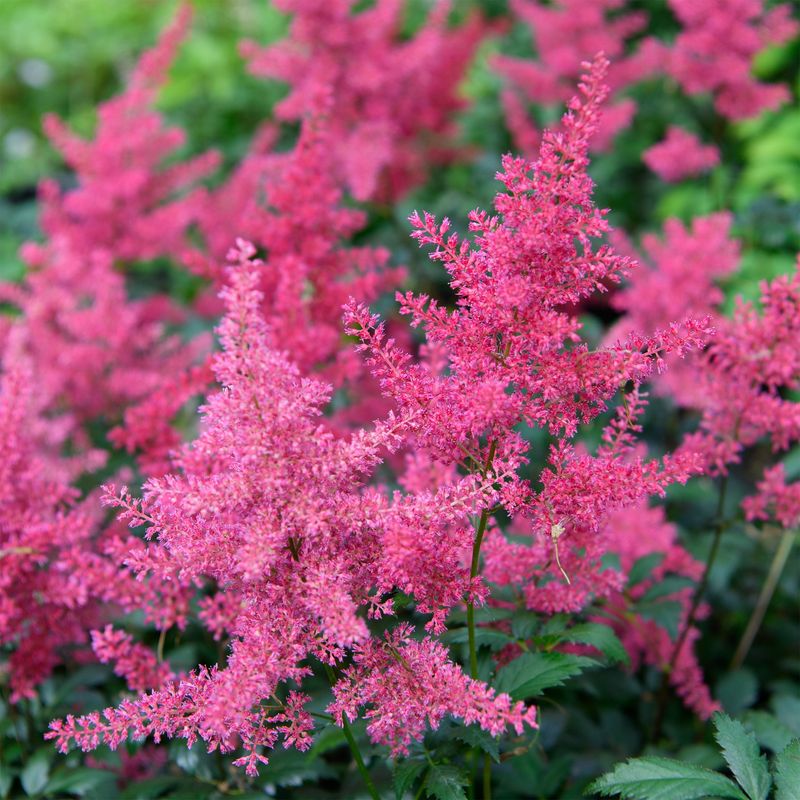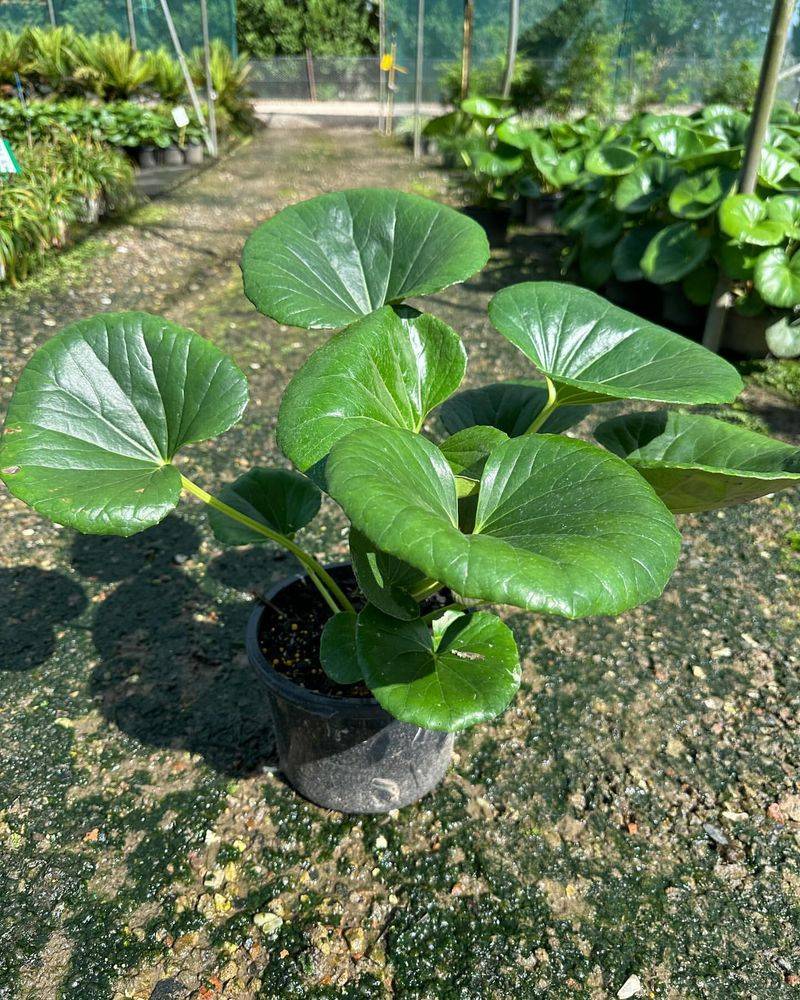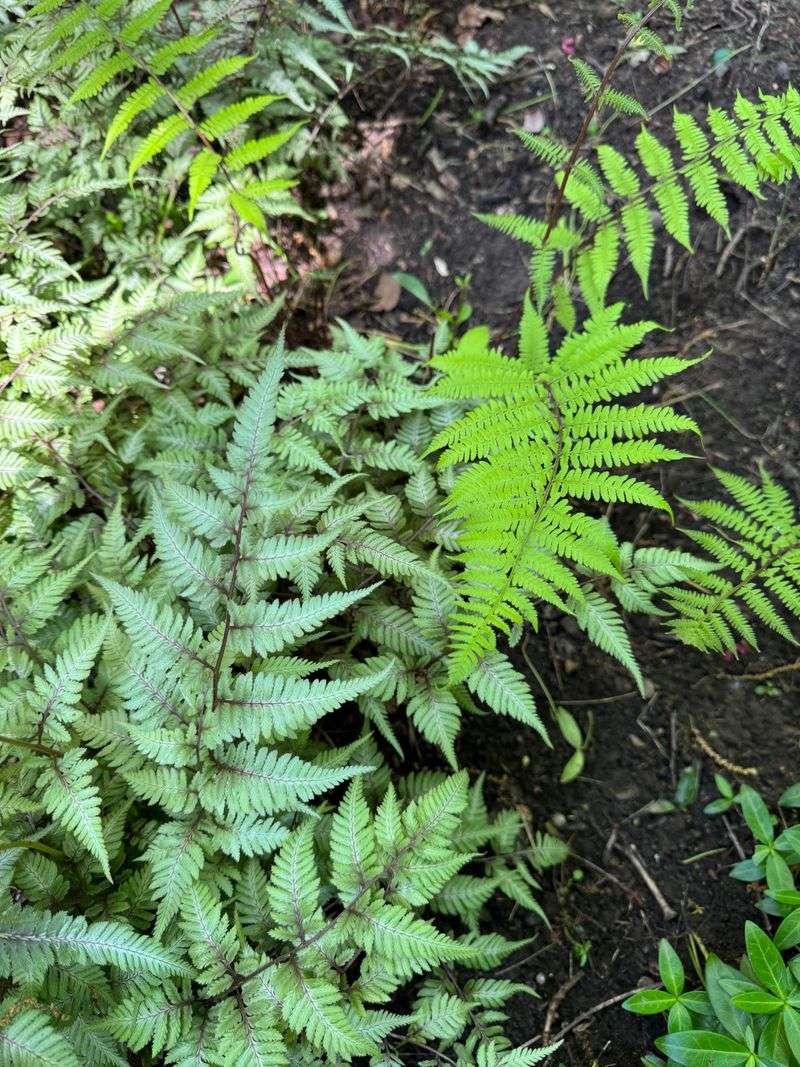By mid-July, my garden’s either thriving or throwing in the trowel. The sun blazes, rain ghosts us, and only the toughest plants stick around. I’ve tested dozens in scorching heat and dry spells, and some keep going like champs—while others fade fast.
These 14 drought-resistant favorites didn’t just survive; they strutted. And the 5 that couldn’t hack it? You’ll want to know them before wasting water, time, or hope.
1. Lavender – The Fragrant Survivor
Lavender laughs in the face of drought with its silvery-gray foliage and intoxicating scent. Native to the Mediterranean region, this herb has evolved to thrive in poor soil with minimal water.
Once established, lavender needs watering only every two to three weeks, even during hot summers. Its deep root system searches out moisture far below the surface.
Beyond drought tolerance, lavender attracts pollinators and repels deer and rabbits, making it a multitasking marvel in any sun-baked garden space.
2. Sedum – Nature’s Living Sponge
Nicknamed ‘stonecrop’ for good reason, sedums store water in their fleshy leaves like natural reservoirs. Their succulent nature allows them to withstand weeks without rainfall while maintaining their attractive appearance.
Available in varieties from ground-hugging mats to upright forms reaching two feet tall, sedums offer something for every garden spot. Their star-shaped flowers in pink, red, or yellow attract butterflies during late summer.
Overwatering is actually more harmful than underwatering these tough plants, making them perfect for forgetful gardeners.
3. Russian Sage – The Silver Cloud
Standing tall through summer’s worst heat waves, Russian sage creates a cloud-like effect with its silvery stems and lavender-blue flower spikes. This perennial powerhouse establishes a deep taproot that accesses water far below the surface.
Russian sage asks for almost nothing once established, thriving on neglect in poor, rocky soils where other plants struggle. The aromatic foliage naturally deters most pests and diseases.
Growing up to 4 feet tall and 3 feet wide, a mature plant becomes a dramatic focal point that sways gracefully in hot summer breezes.
4. Yarrow – The Colorful Warrior
Yarrow’s feathery foliage and flat-topped flower clusters bring reliable color to gardens when everything else has surrendered to summer heat. Ancient warriors once used this plant to stop bleeding on battlefields—explaining its resilient nature.
Modern varieties come in shades from bright yellow to deep red, not just the traditional white. The fernlike leaves stay attractive even during extended dry periods without turning brown or crispy.
A favorite of butterflies and beneficial insects, yarrow adds wildlife value while requiring almost no supplemental water once established in your garden.
5. Agave – The Living Sculpture
Resembling living sculptures, agaves create dramatic focal points with their geometric rosettes of thick, pointed leaves. These architectural plants have adapted to survive in some of North America’s harshest desert conditions.
Many varieties offer blue, gray, or variegated foliage that stands out against drab summer landscapes. Their slow growth means minimal maintenance—some species may grow for decades before flowering once spectacularly.
Sharp leaf tips make thoughtful placement important, but this built-in protection means deer and other browsers leave agaves completely alone during drought times.
6. Yucca – The Desert Sentinel
Standing guard like sentinels in the landscape, yuccas bring year-round structure with their sword-like leaves. Their extensive root systems tap into deep moisture sources, allowing them to thrive during extended drought periods.
Summer brings spectacular flower stalks rising several feet above the foliage, covered with creamy white bell-shaped blooms. Even after flowering finishes, the architectural form continues providing visual interest.
Virtually maintenance-free once established, yuccas shrug off poor soil, intense heat, and neglect that would kill lesser plants. Their natural habitat includes some of North America’s driest regions.
7. Salvia – The Hummingbird Magnet
Salvias keep blooming when other perennials have given up for the season. Their tubular flowers in shades of purple, blue, red, and pink seem to produce endless nectar despite minimal watering.
Aromatic foliage deters rabbits and deer while attracting beneficial pollinators to your garden. Many varieties become almost woody at the base, developing drought-resistant qualities similar to small shrubs.
Native to dry regions worldwide, salvias have evolved specialized adaptations like fuzzy leaves that reduce water loss and reflect heat. A light pruning midseason often triggers another flush of blooms.
8. Ornamental Grasses – The Swaying Survivors
Ornamental grasses transform from ordinary to extraordinary during July’s heat. While lawn grass browns out, these specialized varieties like Miscanthus and Pennisetum continue growing, adding movement and texture to static summer landscapes.
Their extensive fibrous root systems reach deep into soil profiles, accessing moisture unavailable to shallow-rooted plants. Many develop attractive seed heads that catch morning light and provide food for songbirds.
Most require cutting back just once yearly in late winter, making them among the lowest-maintenance options for drought-prone gardens. Their natural resilience comes from evolution in windswept prairies and savannas.
9. Lantana – The Butterfly Buffet
Lantana keeps producing clusters of multicolored flowers through the hottest days of summer when most plants have stopped blooming. Often showing yellow, orange, and red all on the same plant, these flower clusters create a tropical feel despite minimal water needs.
Butterflies flock to lantana’s nectar-rich blooms, creating a constantly moving garden display. The slightly woody stems and leathery leaves help this plant conserve moisture during extended dry periods.
Growing quickly to form mounds up to 4 feet tall and wide, lantana provides substantial garden impact with minimal effort. Many gardeners treat it as an annual, but it’s perennial in warmer zones.
10. Coneflower (Echinacea) – The Prairie Native
Evolved on the wind-swept American prairies, coneflowers stand tall through summer’s worst heat waves. Their daisy-like flowers with distinctive central cones provide weeks of color when many perennials have finished blooming.
Deep taproots allow coneflowers to access water sources far below the soil surface. This adaptation from their native prairie habitat makes them remarkably self-sufficient during drought conditions.
Beyond their ornamental value, coneflowers support native bees and butterflies, while seed heads feed goldfinches and other birds into fall. Modern breeding has expanded the color range beyond purple to include white, yellow, orange, and red.
11. Catmint – The Carefree Bloomer
Catmint creates clouds of lavender-blue flowers from early summer through fall with minimal water requirements. Unlike its cousin catnip, this garden-worthy perennial won’t drive your cats crazy while providing months of reliable color.
Gray-green aromatic foliage naturally repels most pests and remains attractive even when the plant isn’t flowering. A quick shearing after the first bloom cycle often prompts another round of flowers during the hottest part of summer.
Forming neat mounds up to 2 feet tall and 3 feet wide, catmint makes an excellent drought-resistant border plant or groundcover. Its subtle fragrance adds another sensory dimension to water-wise gardens.
12. Blanket Flower (Gaillardia) – The Cheerful Daisy
Blanket flowers bring the warm colors of Native American textiles to summer gardens with their red and yellow daisy-like blooms. These cheerful flowers keep coming even during extended heat waves and drought conditions.
Short-lived perennials, they often reseed themselves, creating natural drifts that expand over time. Their bristly seed heads add textural interest after the petals have fallen and provide food for goldfinches.
Native to North American prairies and plains, blanket flowers have naturally adapted to survive with minimal rainfall. Their slightly hairy leaves help conserve moisture by reducing water loss through evaporation during hot weather.
13. Artemisia – The Silver Foliage Star
Artemisia plants bring striking silver foliage to gardens that remains beautiful despite punishing heat and drought. Their finely divided, aromatic leaves reflect sunlight, reducing water loss and cooling the plant naturally.
Varieties range from low-growing ‘Silver Mound’ to taller types like wormwood, all sharing exceptional drought tolerance. Most artemisias are grown primarily for foliage, with inconspicuous flowers that can be removed to maintain the plant’s neat shape.
Deer and rabbits avoid artemisia’s bitter taste, making these plants doubly valuable during dry periods when hungry wildlife may browse gardens. Many varieties have been used medicinally and in potpourri for centuries.
14. Penstemon – The Beardtongue Beauty
Penstemons bring vertical drama to summer gardens with their spikes of tubular flowers that continue blooming despite heat and drought. Native to some of North America’s driest regions, these plants have evolved specialized adaptations for water conservation.
Flower colors range from vibrant reds and purples to soft pinks and whites, depending on the variety. The common name ‘beardtongue’ comes from the hairy stamen that protrudes from each flower like a fuzzy tongue.
Hummingbirds find penstemon flowers irresistible, hovering among the blooms even during the hottest part of the day. Most varieties maintain semi-evergreen foliage that looks good year-round.
15. Hydrangea – The Thirsty Beauty
Despite their stunning blooms, hydrangeas quickly become drama queens during July heat waves. Their large, thin leaves lose moisture rapidly, causing wilting even when soil feels slightly damp.
The name itself offers a clue—’hydra’ means water in Greek, indicating their high moisture requirements. Most varieties need at least an inch of water weekly during summer, and often more during extreme heat.
Without consistent moisture, hydrangeas not only wilt but may drop flowers and develop brown, crispy leaf edges. Their shallow root systems can’t reach deep water sources during drought, making them high-maintenance choices for hot summer regions.
16. Impatiens – The Shade Wilter
Aptly named, impatiens quickly become ‘impatient’ for water during July’s intense heat. These popular bedding plants collapse dramatically when soil dries out, sometimes beyond recovery despite emergency watering.
Evolved for humid, shady forest floors, impatiens lack the waxy leaf coating that helps other plants retain moisture. Their soft, succulent stems lose water rapidly through transpiration when temperatures climb above 85°F.
While beautiful in spring gardens, by midsummer impatiens often require twice-daily watering in hot regions. Their constant moisture needs make them unsustainable choices during water restrictions or for gardeners seeking low-maintenance plants.
17. Astilbe – The Moisture Lover
Astilbes present feathery plumes of flowers that quickly turn crispy and brown when July heat intensifies. These woodland natives evolved in moist, cool forest settings—conditions opposite to summer’s scorching reality in many regions.
Without consistent moisture, astilbes not only lose their flowers but their entire foliage may die back to the ground. The delicate, fern-like leaves transpire moisture rapidly, unable to conserve water during drought conditions.
While spectacular in spring gardens, by midsummer astilbes often look ragged and stressed without supplemental irrigation. Their high water requirements make them poor choices for water-conscious gardeners dealing with summer heat waves.
18. Ligularia – The Dramatic Collapser
Ligularia makes a bold statement with its large, kidney-shaped leaves—until summer heat arrives. Then this dramatic perennial lives up to its nickname ‘the drama queen’ by collapsing entirely at the first sign of dryness.
Native to stream banks and boggy areas of Asia, ligularia expects constant moisture around its roots. The oversized leaves create substantial surface area for water loss, making this plant particularly vulnerable during hot weather.
Even with regular watering, ligularia often wilts daily during afternoon heat, recovering only when temperatures drop. This constant stress cycle weakens the plant over time, making it unsuitable for water-conscious gardens in hot climates.
19. Japanese Painted Fern – The Delicate Diva
Japanese painted ferns bring stunning silver and burgundy foliage to gardens—until July’s heat turns them crispy. These delicate woodland natives evolved in the cool, humid forests of Japan, making them ill-equipped for summer drought conditions.
Their thin, papery fronds lose moisture rapidly through evaporation, unable to conserve water effectively. Without consistent moisture and humidity, the colorful foliage quickly develops brown edges and eventually may die back completely.
While spectacular in spring gardens, by midsummer these ferns often require daily watering to maintain their appearance. Their high moisture requirements make them unsustainable choices during water restrictions or heat waves.

